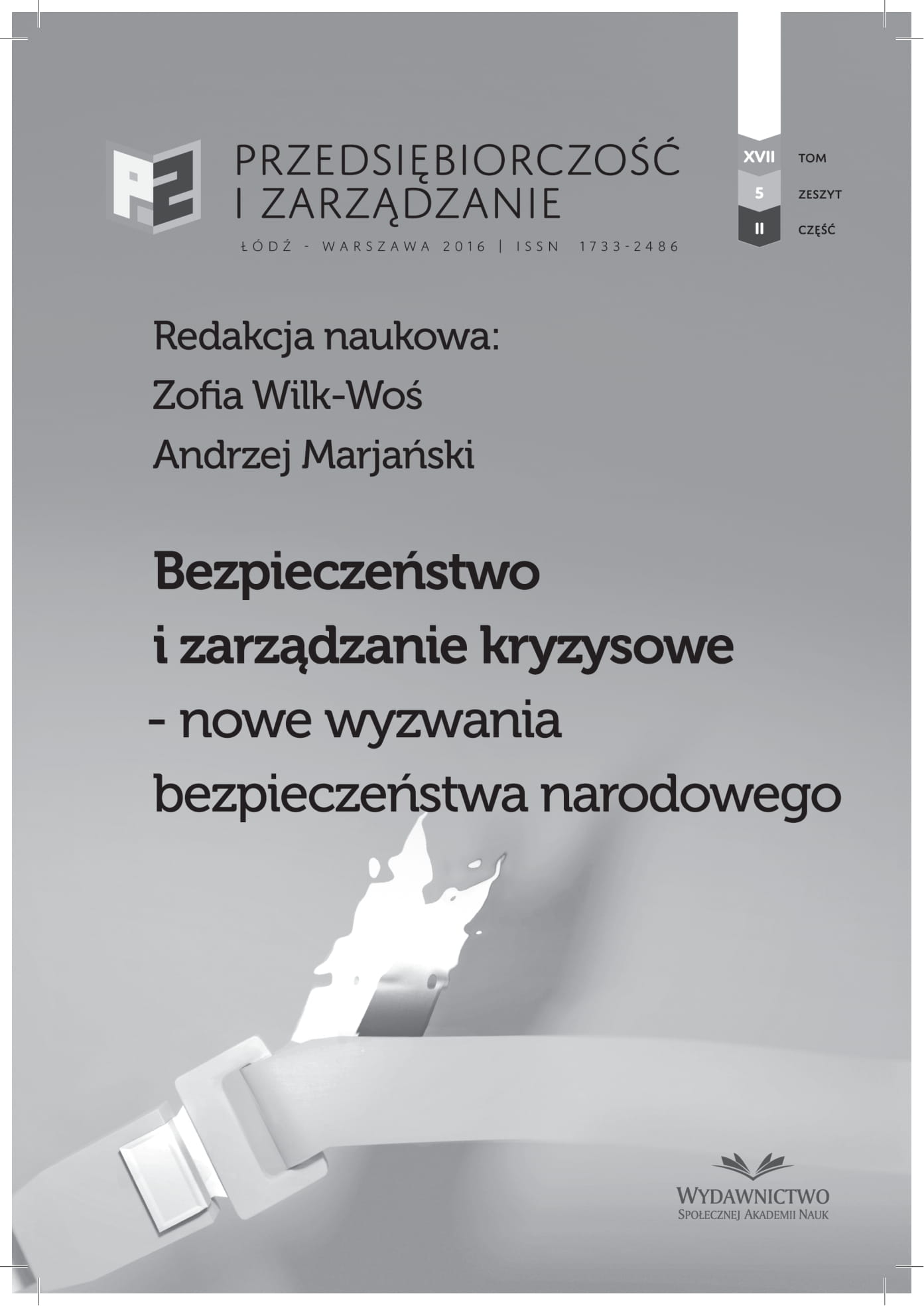Zarządzanie bezpieczeństwem sanitarnym na przykładzie historycznym miasta Radomia w okresie Drugiej Rzeczypospolitej
Managing of Sanitary Safety on Historical Example of City Radom During Second Polish Republic
Author(s): Andrzej BartosiakSubject(s): Management and complex organizations, Health and medicine and law, Interwar Period (1920 - 1939)
Published by: Społeczna Akademia Nauk
Keywords: hygiene; sewage system; health care; sanitary safety; sanitary conditions
Summary/Abstract: During the interwar period, in Radom lived 60 000 (1921) to 90 000 (1939) residents. In these times, Radom was a large agglomeration against Polish society, which was mostly agrarian. The main problem of the city authorities, in the first years after the World War I, was to provide basic living needs for society. City devastation after war and long-standing occupation caused fundamental problems involving nourishment, unemployment, access to the health service and sanitation condition of the city. Solving these issues, they encountered enormous difficulties primarily related to the lack of financial resources, which the city authorities could not dispose of. Technical infrastructure, existing in the city, in particular waterworks and plumbing network could not provide residents of Radom basic sanitation conditions. Inhabitants took water from shallow wells, which were polluted with dangerous bacteria, causing epidemics. To provide running water, improve the sanitary condition of the fairgrounds, proper nutrition, hygiene and the possibility of access to the healthcare for the residents of Radom was a priority of the city authorities.
Journal: Przedsiębiorczość i Zarządzanie
- Issue Year: 17/2016
- Issue No: 5.2
- Page Range: 259-271
- Page Count: 14
- Language: Polish

